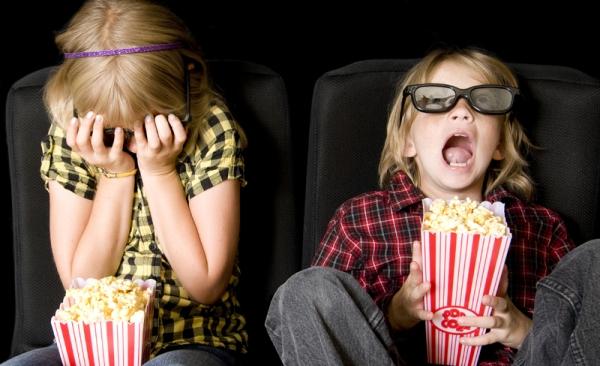3-D Movies Boost Headaches, Not Enjoyment

WASHINGTON — Three-dimensional movies might not be worth their high ticket price.
Moviegoers who watch 3-D films do not experience more intense emotional reactions or a greater sense of "being there" than those who watch 2-D movies, a new study finds. The 3-D versions also don't help you remember the movie better than 2-D versions.
The 3-D movies did, on the other hand, come with a risk of discomfort. Compared with 2-D movie watchers, 3-D movie-watchers were about three times more likely to have eyestrain, headache or trouble with vision, the study showed.
Some people may still prefer to see 3-D movies because they like the movie for other reasons, such as snazzy special effects, the researchers said.
But "all other things being equal, I would say you're increasing your chances of having some discomfort," said study researcher L. Mark Carrier, of California State University, Dominguez Hills, who studies the affects of technology on psychological processes.
Consumers should know "they're aren’t going to be any benefits in terms of understanding the movie better or making the movie more meaningful, as far as we can tell," Carrier said.
Carrier presented his work here on Sunday (Aug. 7) at the America Psychological Association's annual meeting. The work has not been published in a peer-reviewed journal.
Get the world’s most fascinating discoveries delivered straight to your inbox.
Getting your money's worth?
Carrier and colleagues had 400 students watch one of three movies in either 2-D or 3-D: "Alice in Wonderland," "Clash of the Titans" or "How to Train Your Dragon."
After viewing the film, participants went home and completed an online survey. They were asked to rate how realistic the movie was to them and to report emotions and sensations they experienced, which they selected from a list of 60 words. The words ranged from mild emotions, such as "enjoyment," to more intense ones, including "anger" and "rage." Participants were also quizzed on their knowledge of the film.
The survey showed that neither group remembered the movie better than the other. It also showed that 3-D movie-watchers did not experience a greater sense of immersion in the movie's world, nor did they pay more attention to the film or report experiencing more intense emotions.
On average, tickets for 3-D movies cost $3 more than tickets for 2-D movies, the researchers said.
Implications for education
The researchers were surprised by their results.
"Many of us were like, 3-D movies are so cool, it's gotta do something," Carrier said.
It's been thought that 3-D movies or virtual environments enhance learning and memory. One hypothesis is that a 3-D environment is more exciting, particularly for children, and this excitement may translate into heightened interest and motivation to learn, Carrier said.
Some companies that have built virtual environments are prompting their use for education.
"It didn’t seem to enhance your memory at all," Carrier said. "That’s an unfortunate implication."
Carrier and colleagues continue to analyze their data to further understand the impact of the 3-D movie experience on participants' emotions.
Pass it on: 3-D movies don't make you feel more immersed in a film and may give you a headache.
This story was provided by MyHealthNewsDaily, a sister site to Live Science. Follow MyHealthNewsDaily staff writer Rachael Rettner on Twitter @RachaelRettner.

Rachael is a Live Science contributor, and was a former channel editor and senior writer for Live Science between 2010 and 2022. She has a master's degree in journalism from New York University's Science, Health and Environmental Reporting Program. She also holds a B.S. in molecular biology and an M.S. in biology from the University of California, San Diego. Her work has appeared in Scienceline, The Washington Post and Scientific American.


